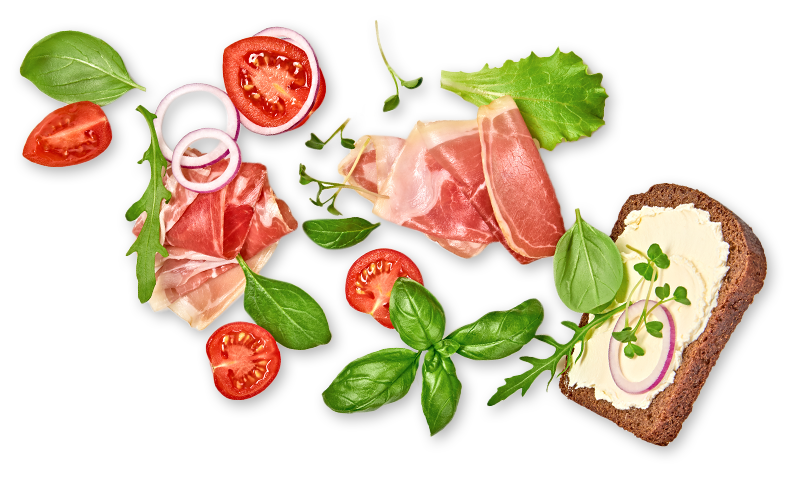How to Avoid Stretch Marks during Pregnancy ? Many women worry about preventing stretch marks during pregnancy. By following proper skin care and prevention tips, it’s possible to avoid them. Taking care of your skin and being proactive can make a big difference.
Good pregnancy skin care involves many things. Eating right and staying hydrated are key. By focusing on preventing stretch marks, women can keep their skin healthy. This guide will cover all the important steps for effective skin care during pregnancy.
In this article, we’ll explore how to prevent stretch marks. We’ll share tips, advice, and expert recommendations. By the end, you’ll know how to take care of your skin during pregnancy. How to Avoid Stretch Marks during Pregnancy ?
Key Takeaways
- Proper pregnancy skin care is essential for preventing stretch marks
- Staying hydrated is crucial for maintaining healthy skin during pregnancy
- A healthy diet rich in essential nutrients can help reduce the appearance of stretch marks
- Preventing stretch marks requires a combination of lifestyle changes and targeted prevention methods
- Understanding how to avoid stretch marks during pregnancy can help women take control of their skin health
- Effective pregnancy skin care involves a long-term commitment to healthy habits and prevention methods
Understanding Pregnancy Stretch Marks
Pregnancy brings many physical changes, and stretch marks are a common worry. To prevent or lessen stretch marks, knowing their causes is key. Hormones, weight gain, and skin elasticity all affect their formation.
What causes stretch marks during pregnancy
Stretch marks come from quick weight gain, hormone shifts, and genetics. As the belly grows, the skin stretches and tears, leading to marks. Pregnancy skin changes also play a part, as the skin’s elasticity drops.
When stretch marks typically appear
Stretch marks can show up at any time in pregnancy. But they’re most visible in the second and third trimesters. This is because the baby grows fast, stretching the skin.
Common areas affected by stretch marks
Stretch marks often hit the abdomen, breasts, thighs, and hips. Knowing the causes and taking steps to prevent them can help. This way, moms-to-be can keep their skin healthy and glowing.
- Abdomen: The most common area for stretch marks to appear, due to the rapid expansion of the skin.
- Breasts: Hormonal changes can cause the breasts to grow, leading to stretch marks.
- Thighs and hips: Weight gain and skin stretching can cause stretch marks in these areas.
The Science Behind Stretch Mark Formation
Stretch marks form when the skin stretches and then tries to snap back. During pregnancy, the skin changes a lot. This is because of hormones like estrogen and progesterone, which affect the skin’s collagen and elastin.
When the skin stretches too fast, the collagen and elastin fibers can break. This leads to stretch marks. Collagen production is key to keeping the skin elastic and strong. During pregnancy, the skin’s demand for collagen goes up. This can make the skin less elastic and more likely to get stretch marks.
Some things that can lead to stretch marks include:
- Genetic predisposition
- Hormonal changes
- Weight gain
- Nutritional deficiencies
To keep the skin elastic and promote collagen, eat well, exercise, and take care of your skin. Knowing how stretch marks form helps you prevent and reduce them.
Risk Factors That Increase Your Chances of Developing Stretch Marks
Knowing what increases the risk of stretch marks is key to reducing their appearance. Several factors can lead to stretch marks, like genetics, age, and skin type. Women with a family history of stretch marks are more likely to get them, thanks to genetics.
Age also plays a role, as skin elasticity and collagen decrease with age. This makes skin more prone to stretch marks. Skin type matters too, with dry skin being more likely to get stretch marks than oily skin. Fast weight gain during pregnancy adds stress to the skin, increasing the risk of stretch marks.
Here are some main risk factors for stretch marks:
- Genetic predisposition: Women with a family history of stretch marks are more likely to experience them.
- Age: Older women are more likely to develop stretch marks due to decreased skin elasticity.
- Skin type: Dry skin is more prone to stretch marks than oily skin.
- Rate of weight gain: Rapid weight gain during pregnancy increases the risk of stretch marks.
By knowing these risk factors, women can take steps to prevent stretch marks. This includes keeping a healthy weight, staying hydrated, and using creams and oils to moisturize the skin.
| Risk Factor | Description |
|---|---|
| Genetic predisposition | Family history of stretch marks |
| Age | Decreased skin elasticity with age |
| Skin type | Dry skin more prone to stretch marks |
| Rate of weight gain | Rapid weight gain during pregnancy |
Essential Nutrients for Skin Elasticity
How to Avoid Stretch Marks during Pregnancy ? During pregnancy, keeping your skin elastic is key to avoiding stretch marks. Eating a balanced diet with important nutrients is vital. Vitamins C, E, and zinc are crucial for making collagen and protecting your skin.
Eating foods rich in vitamin C boosts collagen, which keeps your skin elastic. Citrus fruits, berries, and leafy greens are great for your skin. Vitamin E also protects your skin from harm, making it look healthier and smoother.
Vitamin C and Collagen Production
Vitamin C is vital for making collagen, a protein that keeps your skin strong. Not enough vitamin C can harm collagen production, raising stretch mark risks. Oranges, grapefruits, and kiwis are packed with vitamin C, supporting your skin’s health.
Vitamin E and Skin Health
Vitamin E fights off free radicals that damage your skin. It also makes your skin look better and smoother. Nuts, seeds, and vegetable oils are full of vitamin E, making them great for your diet.

Zinc and Protein Requirements
Zinc is important for making proteins and collagen. Eating foods rich in zinc helps keep your skin healthy and stretch mark-free. Lean meats, fish, and poultry are all good sources of zinc.
How to Avoid Stretch Marks During Pregnancy Naturally
How to Avoid Stretch Marks during Pregnancy ? Many women get stretch marks during pregnancy because their skin expands quickly. But, there are natural ways to prevent or lessen these marks. Using natural remedies like coconut oil, shea butter, and cocoa butter can be very helpful.
These ingredients can be applied to the skin to make it more elastic and reduce stretch marks. Also, a good pregnancy skin care routine is key. This includes moisturizing and exfoliating regularly.
Other natural ways to prevent stretch marks include eating well and staying hydrated. Drinking lots of water and avoiding quick weight gain are also good ideas. By adding these natural remedies and habits to your routine, you can make your skin look better during pregnancy.
Remember, natural stretch mark prevention methods might not get rid of stretch marks completely. But, they can make them less noticeable. By using these methods and a good pregnancy skin care routine, you can keep your skin healthy and glowing, even after pregnancy. How to Avoid Stretch Marks during Pregnancy ?
Hydration and Its Role in Preventing Stretch Marks
Drinking enough water is key for healthy skin. It helps prevent stretch marks during pregnancy. Water keeps the skin elastic and supple, making stretch marks less likely.
It’s not just about drinking water. Eating hydrating foods also supports skin health. Foods like salmon and walnuts, rich in omega-3 fatty acids, reduce inflammation and promote healthy skin. How to Avoid Stretch Marks during Pregnancy ?
Daily Water Intake Recommendations
How to Avoid Stretch Marks during Pregnancy ? The amount of water you should drink daily varies. Most experts say drinking at least eight glasses a day is important. Here are some tips to stay hydrated:
- Drink a glass of water as soon as you wake up
- Keep a water bottle with you all day
- Avoid sugary drinks that can dry you out
Hydrating Foods to Include
Eating hydrating foods also helps your skin. Here are some examples:
- Cucumbers
- Watermelon
- Strawberries
| Foods | Water Content |
|---|---|
| Cucumbers | 96.7% |
| Watermelon | 91.5% |
| Strawberries | 91.0% |
Effective Moisturizing Techniques and Products
Moisturizing is key to preventing stretch marks during pregnancy. The right moisturizing techniques and products keep skin hydrated and soft. Look for stretch mark creams and pregnancy skin care products with natural ingredients like shea butter, coconut oil, and vitamin E.
Effective moisturizing techniques include massaging with a rich moisturizer and using a humidifier. Avoid hot showers that dry out the skin. Choose pregnancy skin care products that are gentle and won’t irritate your skin.
Here are some key ingredients to look for in stretch mark creams and pregnancy skin care products:
- Vitamin E: helps to nourish and protect the skin
- Coconut oil: moisturizes and hydrates the skin
- Shea butter: rich in antioxidants and fatty acids to help soothe and protect the skin
Always read labels and pick products safe for pregnancy. Using effective moisturizing techniques and pregnancy skin care products can reduce stretch marks. This keeps your skin healthy and glowing during pregnancy.
Exercise and Weight Management Strategies
How to Avoid Stretch Marks during Pregnancy ? Regular exercise and managing weight are key for a healthy pregnancy. Exercise boosts skin elasticity and health. Activities like walking, swimming, and prenatal yoga are good for pregnant women.
Experts say women should gain 25-35 pounds during pregnancy. Gaining too much or too little can cause problems. Eating well and exercising regularly helps manage weight and reduce stretch marks.
Safe Pregnancy Exercises
- Walking: a low-impact exercise that can be done throughout pregnancy
- Swimming: a great exercise for pregnant women, as it can help reduce swelling and improve circulation
- Prenatal yoga: a gentle form of exercise that can help improve flexibility and balance
Healthy Weight Gain Guidelines
A healthy weight gain during pregnancy can help reduce stretch marks. The American College of Obstetricians and Gynecologists (ACOG) suggests gaining 1-2 pounds a week.

Movement Techniques for Skin Elasticity
Movement techniques like massage and stretching can improve skin elasticity. They can be done with regular exercise and weight management. This promotes overall health and well-being.
| Exercise | Benefits |
|---|---|
| Walking | Improves circulation, reduces swelling |
| Swimming | Improves flexibility, reduces stress |
| Prenatal yoga | Improves balance, reduces back pain |
Dietary Approaches for Skin Health
Eating a balanced diet full of skin-healthy foods can help your skin stay healthy. It can also lower the chance of getting diet and stretch marks during pregnancy. Foods rich in vitamin C, vitamin E, and zinc are great for your skin’s health and elasticity. How to Avoid Stretch Marks during Pregnancy ?
Here are some skin-healthy foods you can add to your meals:
- Fresh fruits and vegetables
- Whole grains and lean proteins
- Healthy fats like nuts and seeds
Drinking lots of water is also key for healthy skin. Eating foods that are full of water, like cucumbers and watermelon, can make your skin softer. This can also help lessen the look of stretch marks.
How to Avoid Stretch Marks during Pregnancy ? By eating these skin-healthy foods and following pregnancy nutrition tips, pregnant women can keep their skin healthy. This can also lower the risk of diet and stretch marks. It’s important to eat well and drink plenty of water to stay healthy and feel good during pregnancy.
| Foods | Nutrients | Benefits |
|---|---|---|
| Fresh fruits and vegetables | Vitamin C and vitamin E | Promote skin elasticity and reduce inflammation |
| Whole grains and lean proteins | Zinc and protein | Support skin health and reduce the risk of stretch marks |
| Healthy fats such as nuts and seeds | Omega-3 fatty acids | Promote skin hydration and reduce inflammation |
Professional Treatments and Medical Options
Many people look for ways to prevent or treat stretch marks. There are professional treatments and medical options available. These can be great for those who haven’t seen results from natural methods or want more targeted solutions. Professional treatments include topical treatments and safe procedures for pregnant women, helping to reduce stretch marks.
It’s important to talk to a healthcare provider or dermatologist before choosing a treatment. They can look at your skin type and the stretch marks’ severity. They’ll suggest the best treatment for you. Creams or gels with retinoids or hyaluronic acid can improve skin elasticity and make stretch marks less noticeable.

There are also professional procedures like microdermabrasion, chemical peels, or laser therapy for stretch marks. Make sure any procedure is safe for pregnant women and done by a skilled professional. Talking to a healthcare provider can help you choose the right treatment for your needs. How to Avoid Stretch Marks during Pregnancy ?
When picking a treatment or medical option, consider a few things:
- Effectiveness: How well does the treatment work in reducing stretch marks?
- Safety: Is the treatment safe for pregnant women and free from side effects?
- Cost: What’s the treatment’s cost, and is it affordable for you?
By looking at these factors and talking to a healthcare provider, you can find a treatment that meets your needs. This way, you can work towards reducing the appearance of stretch marks.
Creating a Daily Skin Care Routine
How to Avoid Stretch Marks during Pregnancy ? A daily skin care routine is key to keeping your skin healthy and elastic. It helps prevent stretch marks during pregnancy. A consistent routine can greatly improve your skin’s health and look.
It’s important to have both morning and evening routines. The morning routine gets your skin ready for the day. The evening routine repairs and nourishes your skin after a long day.
Morning Routine Steps
- Wash your face with a gentle cleanser to remove dirt and impurities
- Apply a moisturizer to hydrate and nourish your skin
- Use a sunscreen with at least SPF 30 to protect your skin from the sun’s harmful rays
Evening Care Routine
- Remove your makeup and wash your face with a gentle cleanser
- Exfoliate your skin 1-2 times a week to remove dead skin cells and improve skin texture
- Apply a rich moisturizer or night cream to nourish and hydrate your skin while you sleep
Following a daily skin care routine, morning and evening, keeps your skin healthy and elastic. This reduces stretch marks. Drink plenty of water and eat healthy foods to support your skin.
| Product | Morning | Evening |
|---|---|---|
| Cleanser | Gentle cleanser | Gentle cleanser |
| Moisturizer | Lightweight moisturizer | Rich moisturizer or night cream |
| Sunscreen | SPF 30 or higher | Not necessary |
When to Start Prevention Methods
How to Avoid Stretch Marks during Pregnancy ? Preventing stretch marks during pregnancy is all about being proactive. Knowing when to start preventing stretch marks is key. Early prevention strengthens your skin and lowers stretch mark risk.
Creating a pregnancy skin care timeline is vital. It should include moisturizing, staying hydrated, and eating right. Starting early helps your skin adjust to pregnancy changes, reducing stretch mark risk.
Here are important points for your pregnancy skin care timeline:
- Moisturizing regularly to keep the skin hydrated and supple
- Staying hydrated by drinking plenty of water
- Eating a balanced diet rich in essential nutrients
Follow these tips and start early to prevent stretch marks. This way, you can keep your skin healthy and glowing throughout your pregnancy.
Conclusion: Maintaining Realistic Expectations While Protecting Your Skin ( How to Avoid Stretch Marks during Pregnancy ? )
Starting your pregnancy journey means setting realistic expectations about stretch marks. Taking steps to protect your skin can help a lot. But, there’s no sure way to avoid them all. Your skin’s uniqueness, genetics, age, and how fast you gain weight can all play a part.
It’s crucial to care for your skin’s health and flexibility. Use good skin protection methods, eat well, and exercise often. Following this guide can help your skin handle pregnancy’s changes. Even if stretch marks show up, they’re a normal part of it. They don’t change your beauty or the joy of having a new baby.




